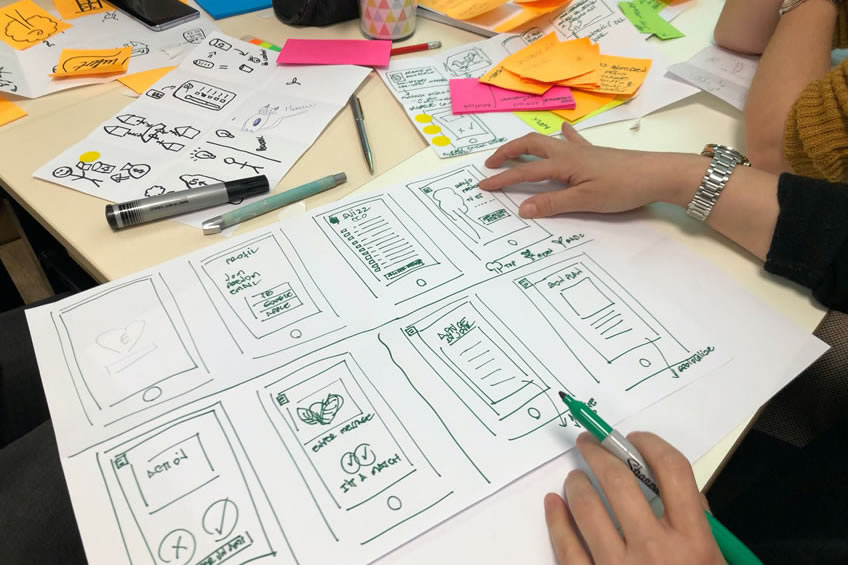We tested this on 10 different platforms. Here are what we found out about user experience. For every product designer, your most important is not your component or your engineering team. The most important component in the product process is the User.
Building an experience around the User
This is the class of people who validate your idea and the effort of your team by adopting the product. It is therefore important for product teams and businesses to understand the basis of user experiences. It should also be an objective to build not just an experience, but a great experience for the user.
While every user is different, there are some bare minimum standards that product teams need to understand. These principles, if it can be termed as that, eases the job of trying to figure out users, especially where you have not tested any prototype of your product.
There are several great resources to look at when starting the design process for your next product. However, it is also vital to understand the basis of UX in product design. Some break it down into three questions, namely the Why, the What, and the How.
These three important questions are probably what every designer needs to ask.
The Why
A Why in a product design highlights the pain points of your end user. That is, why are they using your product? Could it be because of convenience? Driven by the need for better processes or just looking for fun? Answering the Why clearly shows you the pain points of your would-be customers and paints a clear picture of what you need in your first version of product.
The What
The next question is the What. The What addresses the function which a user can access when they use your product. Another insight which we have found from working with diverse teams is that your functions must at the first point of entry of the user validate the Why. That is, whenever a user accesses your product, the functionalities must justify their adoption with the nature of functions you provide. Therefore, for example, where a user is in need of a Podcasting app that track their listens, your product should contain such a feature.
The How
Finally, the How is a vital question that should be asked after the first two must have been answered. The How helps product design teams build solutions into the product in a way the user finds it useful to use. This is the stage where your team engineers the functions into the product. To determine the How, product teams need to build from the perspective of the user. At this point, it is handy to build not only a great interface, but with hard data and experience, adopt functions which increase user satisfaction.
Is it possible to build a great UX?
Yes, it is. Some would disagree with the phrase “great UX”, however, what is essential is enabling a seamless user experience in your product that makes the users stay.
One of the most important principles of building great UX for your users is understanding the nature of your product. There are some underlying principles that can be applied to an e-commerce website that should not be applied to a content-based product. That is, some principles can be applied to an Amazon-like website but can the exact principle work just as well on a platform like Medium? In many cases, no.
Understanding the special features that are important for your product helps you pay attention to them and give them priority. For example, creating a Newsletter product implies you want readers to subscribe by registering the email. Therefore, an email signup section is a vital feature.
Knowing the User
Another important principle apart from understanding your product is understanding the nature of users. Users can be diverse as we have different experiences, cultural backgrounds and in many cases, different tastes. However, it is also possible to build for different users. The most efficient way to do this is to group users by variables and determine the most acceptable standard that will cover the largest percentage of your users. This strategy can be termed the universal design. Whether you adopt a universal design is also dependent on the nature of product. If your product is not meant for a universal audience, it is recommended that the design experience is made for the pool of users you are targeting.
Get feedback, improve your product, test the market and repeat
In building great UX, it is vital for teams to iterate continuously until there is a great prototype to adopt. Like with most human experiences, the best products are made after a lot of refinement. It is acceptable to make mistakes with your first product. What is most important is learning the design lessons by infusing the consumer needs into your product. Therefore, feedback is important and assumptions should not be the only basis for building your UX. Feedback may be obtained from users directly or from expert builders like DevWise, who have worked on diverse projects.
Bad user experiences can be costly to a product. This is what makes the building great UX a priority for many teams. This is what gets you the first loyal users and also what determines your retention rates. Products are launched every day and the best path to profit is getting more satisfied users who market your products by talking about it. To maintain competitive edge above competitors, if any, your product’s UX plays a prominent role in getting users to talk about it.
Questions? Comments? Feel free to contact us. We know how to help you to succeed on your next project.







